
Annual Forbs Around Las Vegas, Vegetation Around Las Vegas
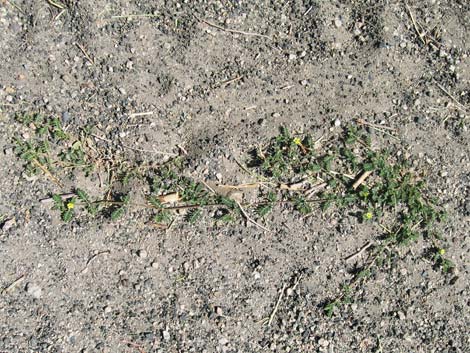 Puncturevine is a low growing vine. |
General: Puncturevine (Tribulus terrestris) is an invasive annual weedy vine. The plant grows prostrate with yellow flowers and dissected leaves that may be covered with hairs. The fruits form a thorny burr that is capable of puncturing bicycle and other tires, not to mention bare feet. Puncturevine is a nasty, noxious weed that is an uncommon component of disturbed semi-desert vegetation. Around Las Vegas, this species is uncommon -- let's all work to make sure it stays that way. Keep an eye out for this is an noxious weed. Land managers are actively working to eradicate Puncturevine, so hopefully you won't see it anywhere. If hikers and other visitors to the native habitats around Las Vegas see this species, please report the observation to the Nevada Department of Agriculture using their online forms. If you have this species on your private property, please eradicate it. |
 Opposite leaflets and 5-petaled, yellow flower |
Family: Caltrop (Zygophyllaceae). Other Names: Puncture Vine, Caltrop, Goathead, Goat's Head. Plant Form: Prostrate vine with stems to about 3-feet long. May grow upright in shaded areas or grow onto other vegetation. Height: Usually only to several inches unless it climbs onto other vegetation. Stems: |
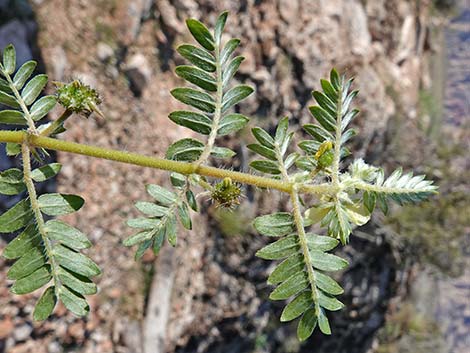 Underside of hairy stems and leaflets |
Leaves: Even-pinnate; hairless or sparsely hairy; to about 2-inches long. Flowers: Single in leaf axils on short petiole. Petals 5, yellow. Seeds: Flowers produce a 5-lobed woody burr that separate into 5 nutlets with two stout spines each. Habitat: Disturbed sites, roadsides. Grows best in sunny, sandy areas. |
 Opposite leaflets and developing seed with spines |
Elevation: Distribution: Puncturevine is native to warmer regions of Europe, Asia, Africa, and Australia. Comments: For More Information: DiTomaso, J.M., and E.A. Healy. 2007. Weeds of California and other Western States. University of California Agricultural and Natural Resources Publication 3488. 2 Vol. ISBN 978-1-879906-69-3. |
 Puncturevine infestation along Kyle Canyon Road |
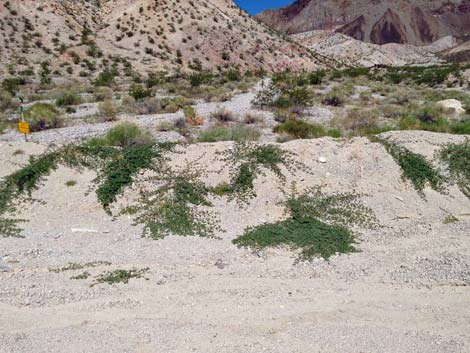 Puncturevine infestation at a popular trailhead in Lake Mead NRA |
 Puncturevine infestation at popular place to stop and take photos |
 Huge puncturevine infestation at Spring Mountains Ranch State Park |
 Puncturevine can grow large and thick |
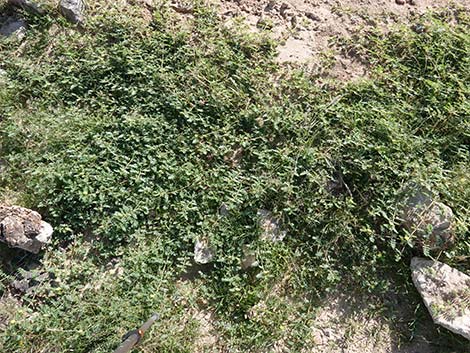 Puncturevine can grow large and thick |
 Puncturevine can grow large and thick |
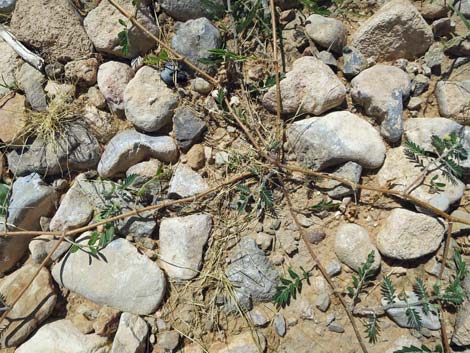 Puncturevine grows outward radially from a central point |
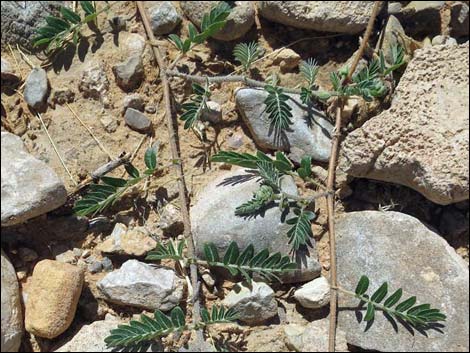 |
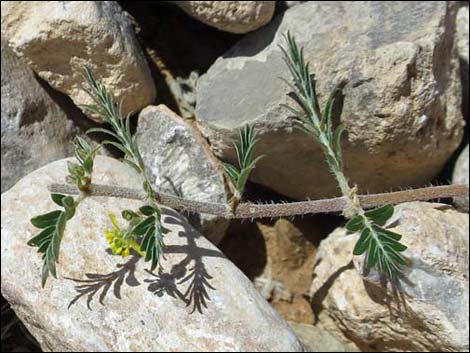 |
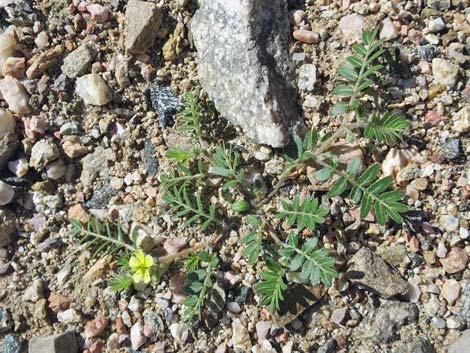 |
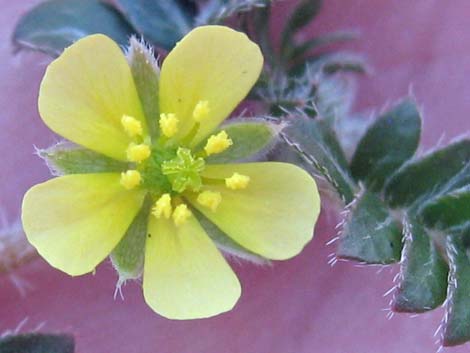 |
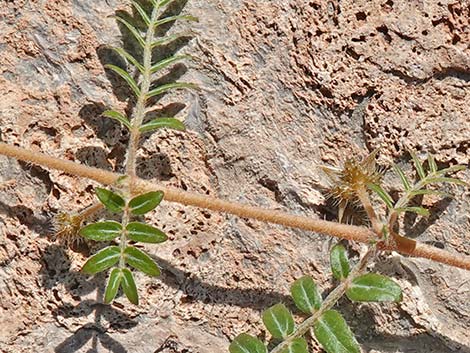 |
 |
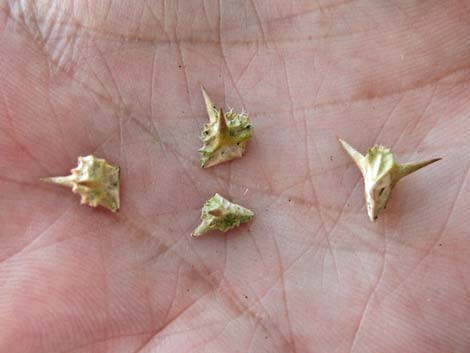 Puncturevine nutlets. Note that the right-most nutlet show the "goat head" characteristic from which one of the common names was derived. |
 A single, nasty puncturevine nutlet. Each woody nutlet contains several seeds |
Note: All distances, elevations, and other facts are approximate. Names generally follow the USDA database.
![]() ; Last updated 231203
; Last updated 231203
| All Annual Forbs | Plant Species Index | Glossary | Copyright, Conditions, Disclaimer | Home |